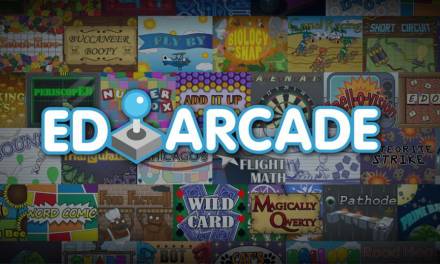Attention deficit hyperactivity disorder (ADHD) can be a complex neurodivergent challenge that children present to parents and teachers. It’s important to understand their needs and accommodate what suits them so they can achieve the best experiences and outcomes.
 EDClass spoke to the founder and CEO of ADHD Advocate, Stephanie Camilleri to discuss the challenges of ADHD and what strategies we can implement to overcome certain barriers. Stephanie was a former lawyer and transitioned to educating and inspiring about ADHD following the diagnosis of her daughter and herself.
EDClass spoke to the founder and CEO of ADHD Advocate, Stephanie Camilleri to discuss the challenges of ADHD and what strategies we can implement to overcome certain barriers. Stephanie was a former lawyer and transitioned to educating and inspiring about ADHD following the diagnosis of her daughter and herself.
The challenges with ADHD
There could be multiple factors affecting a child with ADHD so we must recognise what is exactly challenging them so an appropriate solution can be implemented. ADHD can be difficult to understand, but trying to understand a child with ADHD can help them massively. Stephine said:
“A lot of ADHD is sometimes undiagnosed and it presents differently. No two types of ADHD are the same and people with it are hot-wired for interest, so they must be engaged. Sometimes people with ADHD are emotionally dysregulated or have rejection-sensitive dysphoria (RSD) and struggle to engage whatsoever.
Those with RSD struggle with feelings of not being good enough and worrying about what could potentially go wrong. In our coaching, we help people understand their ADHD and build their confidence.”
Rejection sensitive dysphoria (RSD) is a term used to describe an intense emotional sensitivity and overreaction to perceived rejection, criticism, or failure. It’s not a formal diagnosis in itself, but it’s often associated with conditions like ADHD and borderline personality disorder. We must recognise that no child will have the same experience with their ADHD so finding what will work for them in terms of their education is critical.
Strategies to support ADHD
Finding the perfect solution that addresses every challenge that ADHD presents is unfathomable, however, there are certain strategies you can implement. Ultimately, building confidence and trust with a child should be a priority so you can overcome what is troubling them. Stephanie stated:
“The first aspect to look at is confidence. Children might not understand why they’re struggling or their RSD. We need to look through an ‘ADHD and RSD lens’ to address what you can’t see. Being able to show them that it’s okay to feel the way they are feeling so they can accept that and adjust their expectations. A safe space must be provided so they overcome that coping strategy.”
Have structure and routine – A child with ADHD can feel more secure when there is a schedule or regiment to their day. This can reduce anxiety and allow them to concentrate on tasks better.
Positive reinforcement – Make sure to celebrate a child’s success and achievements. This can build their confidence gradually and allow them to undertake new tasks when they feel ready.
Collaborative approach – It’s important that we communicate with a child to understand what they need. You can then design a strategy or approach that suits their needs – this could be through an online alternative provision.
Flexibility – Offering a flexible approach towards learning can provide great benefits. Allow flexibility in terms of timetables, visual aids, technology tools or movement breaks.
Supporting absentees, school refusers or those disengaged
Those with ADHD may hurt their school attendance figures. Addressing this and ensuring they are still receiving high-quality education should be of paramount importance. However, this should be done in gradual steps with the right solution integrated. Stephanie said:
“The life goal for ADHD should be interdependence, not independence. We need to find what they are interested in and focus on their strengths and what they are uniquely brilliant at.
Teachers should also be coaches first. Get curious and ask the child about their likes, and interests and take a child-centric approach. Active listening or mirroring techniques can be a good way to understand a child’s needs and adjust accordingly.”
Supporting absent students can be achieved through open communication to understand their thoughts and feelings. Implement gradual reintegration strategies such as introducing part-time timetables or using online learning effectively. Stephanie added:
“Online learning can work, but there has to be a balance. It’s got to be real-time. They’ve got to have access to other people online with interaction that keeps them engaged. Progress tracking, gap analysis, gamification and competition can help too. Let’s seriously implement interdependence all the way that’s set these children up to succeed.”
If you would like to learn about how an online alternative provision can support a child with ADHD call EDClass on 01909 568338, send an email to mail@edclass.com or enquire for more information here. You can also read a white paper on implementing supportive reintegration strategies to transform attendance challenges here.










